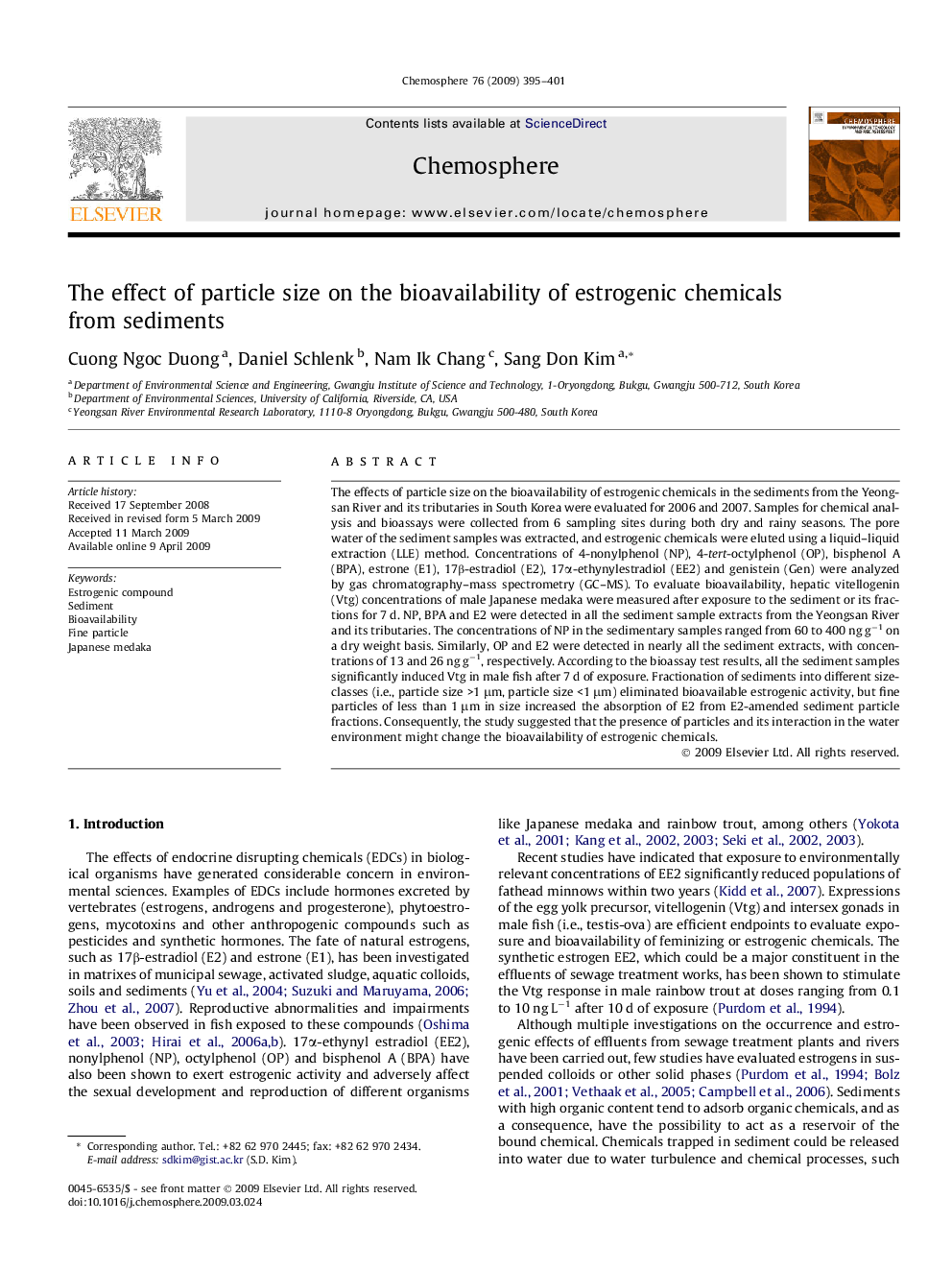| کد مقاله | کد نشریه | سال انتشار | مقاله انگلیسی | نسخه تمام متن |
|---|---|---|---|---|
| 4412871 | 1307655 | 2009 | 7 صفحه PDF | دانلود رایگان |

The effects of particle size on the bioavailability of estrogenic chemicals in the sediments from the Yeongsan River and its tributaries in South Korea were evaluated for 2006 and 2007. Samples for chemical analysis and bioassays were collected from 6 sampling sites during both dry and rainy seasons. The pore water of the sediment samples was extracted, and estrogenic chemicals were eluted using a liquid–liquid extraction (LLE) method. Concentrations of 4-nonylphenol (NP), 4-tert-octylphenol (OP), bisphenol A (BPA), estrone (E1), 17β-estradiol (E2), 17α-ethynylestradiol (EE2) and genistein (Gen) were analyzed by gas chromatography–mass spectrometry (GC–MS). To evaluate bioavailability, hepatic vitellogenin (Vtg) concentrations of male Japanese medaka were measured after exposure to the sediment or its fractions for 7 d. NP, BPA and E2 were detected in all the sediment sample extracts from the Yeongsan River and its tributaries. The concentrations of NP in the sedimentary samples ranged from 60 to 400 ng g−1 on a dry weight basis. Similarly, OP and E2 were detected in nearly all the sediment extracts, with concentrations of 13 and 26 ng g−1, respectively. According to the bioassay test results, all the sediment samples significantly induced Vtg in male fish after 7 d of exposure. Fractionation of sediments into different size-classes (i.e., particle size >1 μm, particle size <1 μm) eliminated bioavailable estrogenic activity, but fine particles of less than 1 μm in size increased the absorption of E2 from E2-amended sediment particle fractions. Consequently, the study suggested that the presence of particles and its interaction in the water environment might change the bioavailability of estrogenic chemicals.
Journal: Chemosphere - Volume 76, Issue 3, July 2009, Pages 395–401